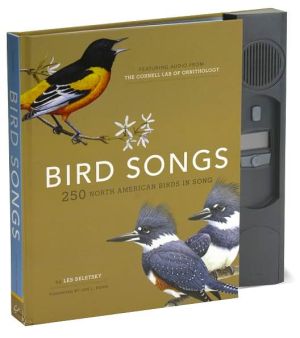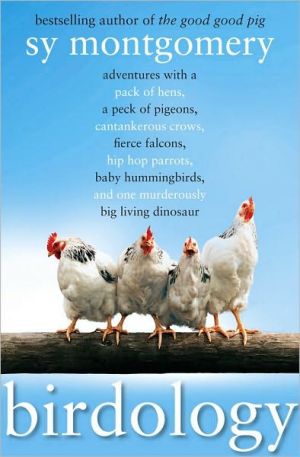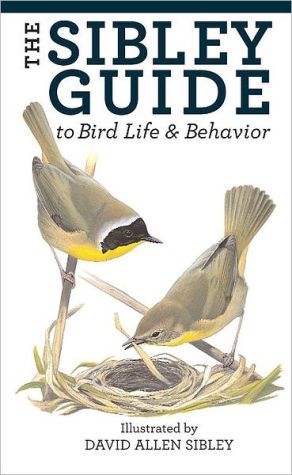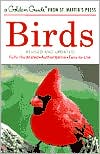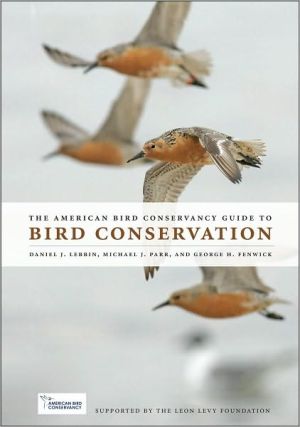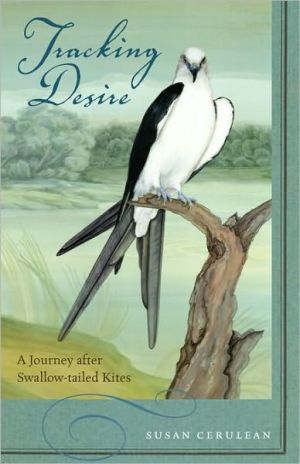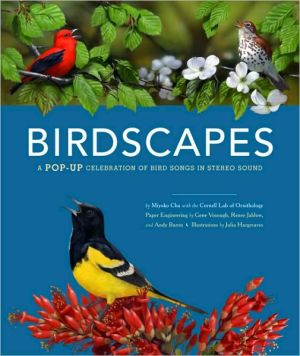Firefly Encyclopedia of Birds
The ultimate reference to the vast world of birds.\ Discover a family of birds who are phenomenal fliers but cannot walk or climb. There is a species that nests at the Arctic Circle and winters at the lower tip of South America, migrating up to 235,000 miles in its lifetime. These and thousands more winged wonders are described in fascinating detail in the Firefly Encyclopedia of Birds.\ Authoritative, easy-to-read essays explain mating rituals, historical significance, evolutionary...
Search in google:
A comprehensive encyclopedia on birds with contributions by over 100 zoologists, covering all aspects of bird behavior, evolution and including reference charts describing each bird order. Intended for all readers it features over 2000 photographs. Marilyn Courtot - Children's Literature If you are a birdwatcher or just fascinated by these creatures who appear to be the distant relatives of the dinosaurs, then this book will provide hours of pleasurable and informative reading. Actually days or weeks if one were to read it through, but since this is a reference work, most users will be looking for specific information about a favorite bird or species. The introductory material is an education in itself explaining about the various classification systems, and the one that this book uses. It is followed by a really good introduction to birds. Readers who are writing reports will learn about the various classes of birds, birds sizes and how their bodies are designed for flying (as well as those of flightless birds), the purpose and structure of feathers, respiration, flight adaptation, senses (vision, hearing and smell), breeding, and nests. All of this information is illustrated in full color with diagrams that clearly demonstrate the principles and give examples of a variety of birds and their abilities. Once all of that is absorbed, readers can spend time reading about specific families of birds. The text describes each bird, its habitat and again is accompanied by beautiful, full-color photographs. An inset box provides basic facts as to the bird's official versus common name, order, family, species or subspecies, where one would find the bird, habitat, size, plumage, voice, nest, eggs, diet and finally conservation status. While the text is quite advanced it could be read by kids 12 and up and younger kids can enjoy the pictures and make use of the fact file data. The feature about penguins occupies ten pages with pictures of the birds underwater, many of the speciesand the habitats which range from vast rookeries to the freezing Antarctic. It was interesting and sad to learn that emperor chicks that fall onto the ice, off the parents feet and out of the brood pouch die of exposure within a few minutes. Gnateaters on the other hand are given one page, but again it is more than enough information for most of us. There is a table of contents, extensive glossary, bibliography, index and list of picture credits that would require a magnifying glass to read. It doesn't matter, the pictures are as good as anything you might see in National Geographic or Smithsonian Magazine. An outstanding reference book for libraries, and a great gift for the consummate birdwatcher. 2003, Firefly, Ages 12 up.
PrefaceNotes on ClassificationWhat is a Bird?A Diversity of Nests -- photo storyOstrichRheasEmusCassowariesKiwisTinamousPenguinsSurviving at the Extremes: Breeding strategies in large penguinsLoons or DiversGrebesAlbatrossesShearwaters and PetrelsStorm PetrelsDiving PetrelsPelicansGannets and BoobiesTropicbirdsCormorantsFrigatebirdsDartersHerons and BitternsStorksUp, Down, Flying Around: Courtship in storksIbises and SpoonbillsFeeding by Touch: Tactile foraging techniques in ibises and spoonbillsHammerheadShoebillFlamingosScreamersSwans, Geese, and DucksA Race to Breed: Food availability and clutch size in arctic-breeding geeseNew World VulturesSecretarybirdOspreyThe Fish-hunting Raptor -- photo storyFalconsShell-shock: The effects of pesticides on birds of preyHawks, Eagles, and Old World VulturesNature's Scavengers: Old World VulturesPheasants and QuailsConstellations of Eyes: The dance of the peacock and its purposeGrouseTurkeysGuineafowlMegapodesCranes and CurassowsCranesTeaching Cranes how to Migrate: Whooping crane conservationLeaping and Bowing -- The Dance of the Japanese Crane -- photostoryRailsLimpkinTrumpetersBustardsBottonquailsMesitesKaguSun BitternSeriemasFinfootsPlovers and LapwingsGoing Out with the Tide: The conservation of shorebirdsSandpipers and SnipesHow Male Ruffs Compete to Mate -- photo storyPhalaropesAvocets and StiltsJacanasPainted SnipesOystercatchersCrab PloverStone CurlewsPratincoles and CoursersSeed SnipesPlains WandererSheathbillsGullsTernsSkuas and JaegersSkimmersAuksSandgrousePigeonsFinding the Way Home: How do pigeons navigate?Parrots, Lories and CockatoosLotus-eaters: Nectar-feeding lories and lorikeetsBack from the Brink: New Zealand's Kakapo -- photo storyCuckoosA Cuckoo in the Nest -- photo storyHoatzinTuracosOwlsBarn and Bay OwlsA Face for the Night: Why an owl looks like an owlNightjarsNightjars and the Lunar Cycle: Hunting by the light of the moonFrogmouthsOwlet-nightjarsPotoosOilbirdSwiftsTreeswiftsHummingbirdsTrogonsMousebirdsKingfishersMotmotsTodiesBee-eatersRollersCuckoo RollerHoopoeWood-hoopoesHornbillsToucansHoneyguidesBarbetsPuffbillsJacamarsWoodpeckersWoodland Drumbeats and Dances: The communication system of woodpeckersNew Zealand WrensPittasAsitiesBroadbillsTyrant FlycatchersCotingasManakinsOvenbirdsWoodcreepersAntbirdsGnateatersTapaculosAustralasian TreecreepersLyrebirdsScrub-birdsBowerbirdsBowerbirds -- Avian Artists -- photo storyFair Wrens and their AlliesHoneyeaters and Australian ChatsAustralian WarblersAustralo-Papuan RobinsLogrunners and their AlliesAustralo-Papuan BabblersWhistlersVireosCrowsSquirreling Crows: How crows cache foodCalculating Crows and Judicious Jays -- photo storyBirds of ParadiseWood SwallowsMagpie-larks and Australian MudnestersButcherbirds and their AlliesNew Zealand WattlebirdsOld World OriolesCuckoo-shrikesFantail FlycatchersDrongosMonarch FlycatchersLeafbirdsIorasShrikesHelmet-shrikesBush-shrikesVangas, Wattle-eyes, and BatisesRockfowl and RockjumpersPalmchatGrey HypocoliusWaxwings and Silky FlycatchersDippersThrushesOld World FlycatchersStarlings and MynasMockingbirdsNuthatchesHolarctic TreecreepersPhilippine RhabdornisesWrensGnatcatchersPenduline TitsTrue TitsThe Great Tit: The world's most studied bird?Long-tailed TitSwallowsBulbulsWhite-eyesOld World WarblersFirecrests and KingletsBabblers and LaughingthrushesLarksThe Skylark's Decline: The threat to a countryside iconFlowerpeckersSunbirds, Spiderhunters, and SugarbirdsSparrows and SnowfinchesWeaversThe Industrious Weaver -- photo storyWagtails and PipitsAccentorsWaxbills and WhydahsChaffinchesFinchesHawaiian HoneycreepersBuntings and New World SparrowsCardinal GrosbeaksNew World WarblersTanagers and Tanager FinchesIcteridsGlossaryBibliographyIndexPicture Credits
\ Children's LiteratureIf you are a birdwatcher or just fascinated by these creatures who appear to be the distant relatives of the dinosaurs, then this book will provide hours of pleasurable and informative reading. Actually days or weeks if one were to read it through, but since this is a reference work, most users will be looking for specific information about a favorite bird or species. The introductory material is an education in itself explaining about the various classification systems, and the one that this book uses. It is followed by a really good introduction to birds. Readers who are writing reports will learn about the various classes of birds, birds sizes and how their bodies are designed for flying (as well as those of flightless birds), the purpose and structure of feathers, respiration, flight adaptation, senses (vision, hearing and smell), breeding, and nests. All of this information is illustrated in full color with diagrams that clearly demonstrate the principles and give examples of a variety of birds and their abilities. Once all of that is absorbed, readers can spend time reading about specific families of birds. The text describes each bird, its habitat and again is accompanied by beautiful, full-color photographs. An inset box provides basic facts as to the bird's official versus common name, order, family, species or subspecies, where one would find the bird, habitat, size, plumage, voice, nest, eggs, diet and finally conservation status. While the text is quite advanced it could be read by kids 12 and up and younger kids can enjoy the pictures and make use of the fact file data. The feature about penguins occupies ten pages with pictures of the birds underwater, many of the speciesand the habitats which range from vast rookeries to the freezing Antarctic. It was interesting and sad to learn that emperor chicks that fall onto the ice, off the parents feet and out of the brood pouch die of exposure within a few minutes. Gnateaters on the other hand are given one page, but again it is more than enough information for most of us. There is a table of contents, extensive glossary, bibliography, index and list of picture credits that would require a magnifying glass to read. It doesn't matter, the pictures are as good as anything you might see in National Geographic or Smithsonian Magazine. An outstanding reference book for libraries, and a great gift for the consummate birdwatcher. 2003, Firefly, Ages 12 up. \ — Marilyn Courtot\ \ \ \ \ Library JournalBird dictionaries and encyclopedias appear regularly. But this volume, a greatly expanded and revised de facto second edition of Perrins's well-received The Encyclopedia of Birds (1985), is superior to other recent titles. Perrins (director, Edward Grey Inst. of Field Ornithology, Oxford Univ.) has gathered authoritative, signed contributions from 151 leading ornithologists. Organized in phylogenetic order, the volume covers almost 10,000 bird species; for each bird family (owls, woodpeckers, thrushes, et al.) there is a map, a general text, and sidebars with paragraphs on nesting, voice, size, diet, plumage, habitat, etc. There are also random essays on appropriate related subjects, such as conservation, courtship, and many family-specific topics of interest as well as a helpful glossary. The volume is highly illustrated in color, both by quality paintings and the approximately 1000 lively, engaging photographs. This excellent reference title in an attractive format is highly recommended for most public and academic libraries. [A BOMC selection and Discovery Book Club main selection.]-Henry T. Armistead, Free Lib. of Philadelphia Copyright 2003 Reed Business Information.\ \ \ Books in Canada\ - Allan Safarik\ A book for long winter nights... simply a fascinating book, fabulously illustrated with fascinating text.\ \ \ \ \ \ Seattle Times\ - Mary Ann Gwinn\ Comprehensive, sumptuously designed and illustrated.\ \ \ \ \ \ International Hawkwatcher\ - Donald S. Heintzelman\ Exceptionally attractive and informative... a major reference to the world's birdlife.\ \ \ \ \ \ Cleveland Plain Dealer\ - Suzanne Hively\ Beautifully illustrated... lavish illustrations and detailed articles provide a lot of information.\ \ \ \ \ \ American Reference Books Annual, Volume 35\ - Charles Leck\ Truly authoritative, but very readable, review of the more than 9,800 bird species on our planet... This well-done reference should be useful for the academic library but also for general public with its easy-to-read text. Indeed, many serious birders may well want to have this hefty volume on their home shelves.\ \ \ \ \ \ Wildlife Activist\ - Dan Kunkle\ An outstanding book that is as beautiful as it is informative, authoritative as it is accessible... an excellent family resource.\ \ \ \ \ \ MacleansFor birdwatchers and anyone else ornithologically inclined, this is it.\ \ \ \ \ \ Toronto Star\ - Jay Ingram\ Fabulous... 600 plus pages, 2,000 photos and, most important, descriptions of 9,850 species.\ \ \ \ \ \ Booklist / RBBA good overview of the birds of the world... outstanding large-format color photographs and illustrations should appeal to both students and the general reader.\ \ \ \ \ \ Science NewsThis massive volume is global in scope... one of the most visually stimulating and informative books ever compiled on avian life.\ \ \ \ \ \ Science Books and Films\ - Timothy C. WIlliams\ Readers of all ages will be drawn to the lavish illustrations... exquisite, often large, photographs... a useful and informative reference.\ \ \ \ \ \ Western North American Naturalist\ - Clayton M. White\ A wonderful contribution... I recommend it.\ \ \ \ \ \ Birder's World\ - Susan Hunt\ An awesome job. This is a beautiful book... read it for pleasure and to be reminded of the richness and beauty of the world's birds. These images are the stuff that dreams are made of.\ \ \ \ \ \ Wisconsin State Journal\ - William R. Wineke\ A huge amount of information about our feathered friends.\ \ \ \ \ \ Outdoor Photography\ - Dikla Kadosh\ Wonderful photography and clear, lively text written by a team of bird experts.\ \ \ \ \ \ Bird TimesIntriguing, lavishly illustrated, and easy-to-read book... a great educational tool for most age levels, and a definitive resource for all birders and naturalists.\ \ \ \ \ \ Minneapolis Star Tribune\ - Jim Williams\ There are years of pleasure and a lifetime of education in this book.\ \ \ \ \ \ E-Streams\ - Lynn C. Westney\ Magnificent... deserves to win an award for the sheer magnificence of its wildlife photography... Highly recommended without reservation... Outstanding.\ \ \ \ \ \ American ScientistAn excellent job organizing... Sumptuously illustrated with 2,000 splendid color photographs, paintings and location maps.\ \ \ \ \ \ Phoenix Home and GardenIntriguing facts... easy to read and is visually enhanced by more than 1,000 color photographs.\ \ \ \ \ \ Canadian Field Naturalist\ - Serge Larivière\ A good collection of text and photos of the birds of the world all in one volume. Nicely presented with tons of sharp photos... a fantastic introduction.\ \ \

